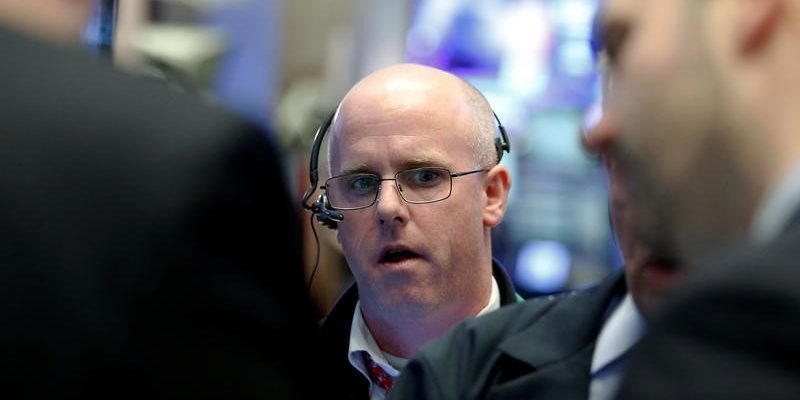
Home Bancorp (NASDAQ:HBCP) (HOMB) has reported a net income of $9.4 million, or $1.18 per share, for the third quarter of 2024, marking an increase from the previous quarter. The bank’s net interest margin expanded, and return on assets improved, even as loan growth remained subdued. CEO John Bordelon and CFO David Kirkley discussed the bank’s financial performance, outlook, and the impact of a recent paydown of a medical C&I loan on loan growth. They also highlighted the increase in deposits, primarily in money market and interest-bearing checking accounts, and shared insights on the bank’s strategies in light of potential interest rate cuts.
Key Takeaways
Home Bancorp’s net income rose to $9.4 million, with earnings per share at $1.18.
Net interest margin increased to 3.71%, and return on assets improved to 1.1%.
Loan growth was limited, with a significant $19 million medical C&I loan paydown.
Deposits grew by $55 million, led by money market and interest-bearing checking accounts.
The bank repurchased 24,000 shares at $38.50 each and raised its dividend to $0.26 per share.
Non-performing loans saw a slight increase to 0.68% of total loans.
Non-interest income fell to $3.7 million, while expenses rose to $22.3 million.
Management is optimistic about future loan demand, particularly in the mortgage sector, if rate cuts occur.
Company Outlook
The bank’s management expects loan growth at the lower end of the 4% to 6% guidance for 2024.
Potential increases in loan demand are anticipated, especially in construction and existing facilities, if interest rates decline.
Key markets for commercial growth include Houston, New Orleans, and Lafayette.
The bank is focusing on customer service and maintaining a conservative credit culture.
Bearish Highlights
Slow loan growth of $7 million (1% annualized) was reported.
A notable $19 million payoff from a hospital impacted loan growth.
Non-interest income decreased, and expenses increased.
Bullish Highlights
Asset yields and average interest-earning assets grew.
The bank maintained a strong loan-to-deposit ratio of 96.1%.
Management expressed optimism about loan demand in response to potential rate cuts.
Misses
The bank experienced principal paydowns and payoffs higher than expected, affecting growth projections.
Q&A Highlights
Management discussed the competitive landscape for deposits and the potential for lower deposit costs.
They are preparing for rate cuts and their impact on deposit behavior and net interest margin.
The bank is evaluating cost-saving measures to offset potential increases in expenses due to merit raises and technology investments.
Home Bancorp’s financial performance in the third quarter of 2024 reflects a resilient banking operation with a focus on managing growth and responding to market conditions. The bank’s leaders are strategically preparing for the future, with a keen eye on interest rate movements and their impact on the bank’s loan and deposit portfolios. With a conservative approach to credit and a commitment to customer service, Home Bancorp aims to drive long-term shareholder value amidst a changing economic landscape.
InvestingPro Insights
Home Bancorp’s (HBCP) recent financial performance aligns with several key insights from InvestingPro. The company’s reported net income of $9.4 million and earnings per share of $1.18 for the third quarter of 2024 reflect its continued profitability, as highlighted by InvestingPro Data showing a P/E Ratio of 9.96. This relatively low P/E ratio suggests that the stock may be undervalued compared to its earnings potential.
The bank’s focus on maintaining dividend payments is evident in its recent dividend increase to $0.26 per share. This commitment is underscored by an InvestingPro Tip noting that Home Bancorp “has raised its dividend for 10 consecutive years.” The current dividend yield stands at 2.23%, providing a steady income stream for investors.
Despite the challenges in loan growth mentioned in the earnings report, Home Bancorp’s stock has shown strong performance. An InvestingPro Tip reveals that the stock is “trading near 52-week high,” with a significant “large price uptick over the last six months.” This is corroborated by InvestingPro Data showing a 25.99% price total return over the past six months and a 37.4% return over the last year.
The company’s ability to maintain profitability in a challenging environment is further supported by InvestingPro Data indicating an operating income margin of 37.16% for the last twelve months. This robust margin aligns with management’s focus on efficiency and strategic growth in key markets.
While the article mentions subdued loan growth, it’s worth noting that InvestingPro Tips indicate that analysts predict the company will remain profitable this year. This outlook, combined with the bank’s conservative credit culture and focus on customer service, suggests resilience in the face of market challenges.
For investors seeking a more comprehensive analysis, InvestingPro offers 8 additional tips for Home Bancorp, providing a deeper understanding of the company’s financial health and market position.
Full transcript – Home Bancorp Inc (HBCP) Q3 2024:
Operator: Good morning, ladies and gentlemen, and welcome to the Home Bancorp Third Quarter 2024 Earnings Conference Call. All participants will be in listen-only mode. [Operator Instructions] After today’s presentation, there will be an opportunity to ask questions. Please note, this event is being recorded. I’d now like to turn the conference over to Home Bancorp’s Chairman, President and CEO, John Bordelon; and Chief Financial Officer, David Kirkley. Mr. Kirkley, please go ahead.
David Kirkley: Thank you, Eric. Good morning, and welcome to Home Bank’s third quarter 2024 earnings call. Our earnings release and investor presentation are available on our website. I’d ask that everyone please refer to the disclaimer regarding forward-looking statements in the investor presentation and our SEC filings. Now I’ll hand it over to John, to make a few comments about the third quarter. John?
John Bordelon: Thank you, David. Good morning, and thank you for joining our earnings call today. We appreciate your interest in Home Bank as we discuss our results, expectations for the future, and our approach to creating long-term shareholder value. We reported third quarter net income of $9.4 million, or $1.18 per share, which was a nice improvement from last quarter’s strong results. Net interest margin continued to expand, increasing five basis points to 3.71%. We’re optimistic that the trend will continue, as the Fed rate cuts reduced pressure on our cost of funds. Return on assets also increase and was 1.1% in the third quarter, up 13 basis points from the second quarter. Loan growth slowed in the third quarter, and was impacted by the paydown of a $19 million medical C&I loan. As we said last quarter, two plus years of sustained higher rates, has had a material impact on loan demand in our markets. We’re optimistic that rate cuts and some clarity in November, could lead to a pickup in loan demand and originations. Based on the soft demand we saw in the third quarter and are seeing in the fourth, we’re expecting 2024 loan growth, to finish at the lower end of our 4% to 6% guidance. Even in the current low demand environment, which we don’t expect to last, we think we have an opportunity to drive asset yields higher, as our fixed rate book net naturally reprices. Deposits increased $55 million or 8% annualized, with most of the growth coming from money market, and interest-bearing checking accounts. Money market CD rates were quick to adjust lower after the rate cut in September, and we’re optimistic that future rate cuts will have a similar impact. David will provide some more details on our asset and liability repricing, to give everyone a sense of the potential to drive our asset yields higher, and reduce our funding costs over the next few quarters. It has been frustrating over the last three years that Home Bank continues to perform well, and the market hasn’t responded accordingly. This frustration exists, because we continue to feel very good about Home Bank’s outlook, and have demonstrated strong performance in a variety of economic cycles. But we can’t control the market, so we’ll focus on the things that we can control, such as providing exceptional customer service, expanding relationships with new and existing customers, and maintaining our conservative credit culture. In the long-term, we are confident that our approach, will continue to build shareholder value at Home Bank. With that, I’ll turn it back over to David, our Chief Financial Officer.
David Kirkley: Thanks, John. We continue to see increases in asset yields, outpaced increases in funding costs in the third quarter. The yield on average interest-earning assets increased by 12 basis points to 5.82%, while the yield on average interest-bearing liabilities, increased by nine basis points to 3.02%. This dynamic continued to benefit net interest income, which increased to $30.4 million, up $989,000 from the previous quarter. As John mentioned, loan growth slowed during the quarter to $7 million, or about 1% annualized and that contributed, to a lower loan loss provision of $140,000. The slower loan growth, combined with the $55 million increase in deposits, reduced our loan-to-deposit ratio to 96.1%. Despite the slower loan growth, we believe we have near-term opportunities to pick up some spread as loans reprice. The origination market is competitive and the rate environment is volatile, we’re continually originating loans with yields above 7.5%, which compares favorably to our fixed rate loan portfolio. 62% of our loan portfolio is fixed rate and yields a weighted average rate of 5.27%. So while our mix of fixed to floating rate loans, slowed asset yield increases when rates were climbing, we think it should provide some downward protection on yields in NIM, now that we appear to be in a decreasing rate environment. We also think we have an opportunity to stabilize, or reduce our liability costs in the next few quarters, depending of course, what happens with market rates. We have approximately $500 million, or 70% of CDs maturing in the next six months, with a weighted average rate of about 4.75%. New CD origination rates from October, are at least 35 basis points lower. We also have $135 million of 4.76% BTFP borrowings maturing in January. Slide 8, breaks down our loan portfolio composition and you may notice some changes. The increase in the percentage of one to four family mortgages and the decrease in CRE, was due to updates to our loan coating systems as opposed to actual shifts in collateral, or origination activity. Slides 9 through 12, are new and provide additional details on our CRE and C&I portfolios. Slides 14 and 15, of our investor presentation provides some additional detail on credit. Non-performing loans increased by $1.3 million in the third quarter, to $18.1 million or only 0.68% of total loans. Our allowance for loan loss ratio was stable, from the second quarter at 1.21%. Slide 21, of the presentation has some additional details on non-interest income and expenses. Third quarter non-interest income decreased slightly to $3.7 million, and should be between $3.6 million and $3.8 million over the next two quarters. Non-interest expense increased by $450,000 to $22.3 million, which was in line with expectations. We expect core non-interest expenses, to be between $22 million and $22.5 million during the next two quarters. We repurchased 24,000 shares at an average price of $38.50 in the third quarter, which equates to 94% of tangible book value, excluding AOCI. We also increased our dividend by $0.01 to $0.26 per share, which gets us close to the midpoint of our target dividend payout ratio, of 20% to 25.5% of earnings. Slide 22, summarizes the impact our capital management strategy has had on Home Bank, over the last few years. Over the last five years, we grew adjusted tangible book value per share at a 9.1% annualized growth rate, and over the same period, we also increased EPS at a 7.9% annualized growth rate. We’ve increased our dividends per share by 20%, and repurchased 14% of our shares during the same time period. And we’ve done this while maintaining a robust capital ratios, which positions us to be successful in – varying economic environment, and to take advantage of any opportunities as they arise. With that, operator, please open the line for Q&A.
Operator: [Operator Instructions] Your first question comes from Feddie Strickland. Please go ahead.
Feddie Strickland: Hi, good morning guys.
John Bordelon: Good morning, Feddie.
Feddie Strickland: Just wanted to start with loan growth. John, I think you touched on this a little bit in your opening comments, but I mean if you start to get a series of rate cuts as Fed funds futures are showing. I mean, can we see loan growth maybe return to something more like a mid to high single-digit annualized rate, as we get into ’25 if we see a series of 25 basis point cuts throughout the year?
John Bordelon: Absolutely. I think the most obvious one is the one to four portfolio. That’s begun to shrink as new originations have slowed significantly. With the 10-year going up, mortgage rates have climbed into the higher 60s. And so, I think that’s had a negative impact, but the builder is not wanting to put too much product out there. So I know that will, with the rate cuts on the long end that, would definitely help the mortgage industry. As far as just other commercial loans, I do believe that – many of our customers have pause momentarily just to see where rates are going, where they’re going to stop. What’s going on economically, and throughout the United States. So I think it’s prudent that they do kind of hesitate shortly, but I’m anticipating first, second quarter that they should pick that back up, assuming that we’ve dropped at least 100 basis point in rate.
Feddie Strickland: Got it. That’s helpful. And then just geographically, I mean do you expect that New Orleans and Houston, still drive a good bit of the commercial growth going forward? Or is there some opportunities maybe in other parts of the footprint that, you haven’t touched yet?
John Bordelon: Surely, the strongest markets are Houston, New Orleans and Lafayette. Other markets periodically come in with some improvement, but the strength of the company is in those three markets. No question.
Feddie Strickland: Got you. And just shifting to credit for a second. I was wondering if you could talk a little bit more, about the relationships that were put on nonaccrual this quarter. And I wanted to ask those are the same ones that, seem to migrate into substandard in the construction category?
John Bordelon: Yes. So we have one credit in the New Orleans area where it is, I think, 15 different rental properties – and this stems from a disagreement with the partners, and the properties are still being rented. It’s off of St. Charles Avenue, around Tulane University. And so, there’s no problems with the property. It’s just a disagreement with the owners. We are heading for share of sales. I think there are five different share of sales dates for all these properties. And I think the first ones are at the end of this month, and then November and then January. So we should be completely free of that. There’s about $2 million of equity in all the properties. So, we anticipate being taken out at share of sale on all of those.
Feddie Strickland: Got you. That’s it for me. I’ll step back in the queue.
John Bordelon: Thank you, Feddie.
Operator: Your next question comes from the line of Joseph Yanchunis. Please go ahead.
Joseph Yanchunis: Good morning.
John Bordelon: Good morning, Joe.
Joseph Yanchunis: Yes. So I want to circle back on loans for a minute, and I appreciate the color on the reclassification of the loan categories. I’m curious to know, what was gross loan production in the quarter and, just trying to get an idea of kind of payoffs here. And if kind of CRE payoffs start to accelerate, that would be a headwind to loan growth, but would also lead to better lending opportunities if rates fall. Just kind of trying to get a little more color on that?
John Bordelon: We’re looking that up…
David Kirkley: We were about $80 million in new originations in Q3, which is about equal or a little bit less than prior quarter, weighted average rate coming in around 78.5% on those new originations. We did have higher levels of principal paydowns and – payoffs during the quarter, probably the highest since Q1 of ’23. So higher paydowns that we’ve experienced, which stymied some of our growth this past quarter. Joe, I’m sorry, was there another question in that one as well?
Joseph Yanchunis: Well, I was just kind of wondering how you see kind of payoffs, kind of behaving as we kind of move into a rate-cutting environment?
David Kirkley: Yes I think – incremental lending opportunities will offset that headwind.
John Bordelon: The $19 million payoff in C&I came about – basically, it’s a major hospital that opened up a new line of manufacturing gloves and other PPE. And that has not – they have not really performed, as well as they wanted. So they had the excess cash. They just paid us off instead of paying us 7% or 8%. So that’s kind of a one-off that, we don’t expect any more. But we are seeing, in fact, I’m betting two new opportunities this afternoon. So I do think that with lower rates, there’s going to be more projects done. The two we’re looking at this afternoon. One is construction and the other is an existing facility. So it’s hard to really predict. I do think have we not had that $19 million payout to – probably look very similar to the first and second quarter, but it has slowed. There’s no question. Our construction book is slower than where it was in first and second quarter. And we anticipate as rates go down, as the new presidency takes over, that things will settle down probably in second quarter and take off again.
Joseph Yanchunis: Got it. And just kind of flipping over to deposits. Can you talk about deposit pricing? What does competition look like in your markets? And kind of how do you believe betas will behave on the way down and kind of piggybacking off that, if loan demand remains relatively muted in the near term, as you’ve alluded to, and you do continue to see kind of pressure around deposit pricing. How should we think about the NII trajectory, moving forward?
John Bordelon: I’m going to comment and let David follow up on that. I do believe that – most all of the banks in our markets have followed suit and dropped their rates. We are seeing some people pull out a little bit of their CDs in search for other rates, but those may be with brokerage houses or whatever. But not necessarily banks. We’re not seeing that. So most of the players are doing as we’re doing, and trying to lower their deposit costs. So I think with additional cuts by the Fed, we should see the ability to continue to bring down our costs. Our highest rate today is at 4.75% for three months, and we would anticipate that coming down significantly, if not throughout the remainder of this year, surely in the first quarter.
David Kirkley: Yes, Joe, if you look at our cost of funds on Slide 18, you’ll notice cost of CDs were flat quarter-over-quarter. If you look at the spot rate from June compared to the spot rate of September, we’re actually down about 25 basis points on CD yield. So you’ll see that play out in Q3. And if you look at our NIM slide on Slide 19, you’ll see uptick in yields in September. So we are seeing the ability, to lower our CD pricing a good bit. And as John pointed out, our competitors have mostly been aggressive in CD rate cuts and money market rate cuts after the Fed announcement. As I talked about in the – earlier. Our loan rates – we have less variable rate loan in our portfolio than some of our competitors. So our loan yields should not be as negatively impacted, as some of our other competitors, as rate cuts continue down the next couple of quarters. Give a little bit more context on that, spot rate on loans from June to September was actually up six basis points, despite the 50 basis point rate cut in September. So we have a lot of fixed rate loan opportunities coming due, and they’re coming due at lower rates. So being able to reprice some of those loans a bit higher, which should offset some of the rate cuts in the future.
Joseph Yanchunis: I appreciate that. And just kind of sticking with Slide 19 here. You have the BTFP funding that’s going to mature in January. Do you have a plan to kind of backfill that?
David Kirkley: We’re looking in the options. I think given two rate cuts, we’re going to be kind of in the money on that, with really no impact if we had to go out and borrow overnight. We’re looking at some options to divvy that up between maybe some overnight advances as well as some term funding.
John Bordelon: And we’ve been carrying a little bit of excess cash over the quarter, just not knowing exactly what’s going to happen with deposit flow.
Joseph Yanchunis: Okay. And if I could just slip in one more here. I know it’s early for 2025, but some banks over the past week have talked about generating positive operating leverage next year. Is that something you believe will occur?
David Kirkley: Yes. Look, Joe, we think there’s the opportunity. I think we’re in a good spot with our loan book and our deposit book that, we should see at the very least stabilization in NIM. We expect based off of the deposit behavior, and the ability for us to reprice some loans that we’re going to be able, to tick up on NIM over the next couple of quarters as well.
John Bordelon: The severity of the cuts or the speed of the cuts, I think, is what would cause us the most damage to our NIM – methodically throughout 2025, reduced rates, then I think our loan yields will be able to exceed the deposit costs. So, if they drop 50 basis points in November and 15 in December, then it may take, to David’s point, a couple of quarters for our NIM to start back up again.
Joseph Yanchunis: Well, perfect. I appreciate you taking my questions.
John Bordelon: Thanks, Joe.
David Kirkley: Thank you, Joe.
Operator: [Operator Instructions] Your next question comes from Feddie Strickland with Hovde Group. Please go ahead.
Feddie Strickland: Hi John, just a quick follow-up after last question, or that last comment on the margin. It sounds like the difference between your rate sensitivity disclosure, is saying that if we have down 100, NII goes down, it was basically all of that happening at once in that shock scenario versus what appears to be the current reality, which is potentially having that gradually happen over time? And is kind of the puts and takes there that you’re able to react. You’ve got some deposits repricing loans, or repricing and you can actually manage it, versus all that hitting at once and they’re just getting some of your floating great loans. Is that sort of the puts and takes, between what the rate sensitivity disclosures are, and what we could actually see happen over the course of ’25?
David Kirkley: Yes. The big problem right now that I think we’re having as the Home Bank, as well as other banks is figuring out deposit behavior with rate cuts. I think this past rate cut, when they announced 50 basis points, the market expected basically another 100 basis points of rate cuts by the end of ’24, and continued into ’25. I think a lot of people reacted, and were able to lower their CD rates with that expectation. And since then, rate cut expectations have moderated a little bit. And so finding that right balance where we’re able to retain our CD customers, and grow our deposits is really dependent on how much cuts that we’re going to be expecting – when they’re going to occur, and how our competitors react to those cuts. I feel like there may be some upward pressure on deposit prices over the next couple of months. With regards to maybe, there was too much rate reductions on deposit rates, across the market with the expectations of rapid rate cuts. So I think, there may be some stabilization, or the beta is not being as high when further rate cuts are announced.
John Bordelon: That drove pretty much our decision on how we’re pricing our CDs right now. We have a rate on a three-month that is one of the higher in all of our markets. So, we wanted to stay a little bit high, because of David’s comments here that we’re not sure exactly what’s going to happen in November. Do we do 50%, do we do 25%, do we not do anything. So we do anticipate the ability to be able to move that rate down. We’re just going to measure the market, and see how far we can go.
Feddie Strickland: Got it. That’s helpful. Thanks guys. And just one last follow-up for me too, on expenses. I appreciate the near-term guidance there. Just curious if there’s anything on the horizon down the road with, maybe in later ’25 that could cause any sort of acceleration, whether it’s merit increases or investment in new technology, or new core system or something. Just curious if there’s anything on the horizon that, could cause expenses to materially tick up a little bit in the back half of ’25?
David Kirkley: Yes. We generally have annual raises that take effect April 1. So you’ll see an uptick in comp and benefit expense during that time period. We are going through the budget process right now, and evaluating those things. There are no material objects that are jumping out there are out of the course, of the ordinary right now for a capital expenditure standpoint.
John Bordelon: But I am looking for cost saves so as not to, so those merit rates aren’t as impactful as they would be normally.
Feddie Strickland: Got it. Thanks that’s helpful. That it’s from me.
John Bordelon: Thank you very much.
Operator: This concludes our question-and-answer session. I would like to turn the conference back over to John for any closing remarks.
John Bordelon: Once again, thank you all for joining us today. We look forward to speaking to many of you in the coming days, and I hope you have a wonderful weekend. Thank you.
Operator: The conference has now concluded. Thank you for attending today’s presentation. You may now disconnect.
This article was generated with the support of AI and reviewed by an editor. For more information see our T&C.












